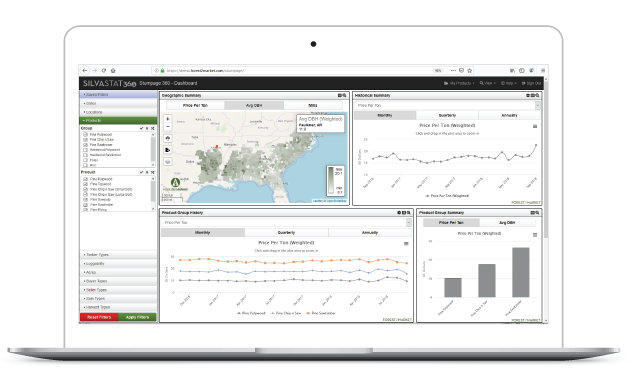
Record high lumber prices have been prominent in the news for the last several months as the North American market has struggled to strike a balance between adequate supply from manufacturers and rabid demand from homebuilders. The trend has seemingly defied all odds as prices for southern yellow pine lumber, for instance, nearly touched the $1,000 per thousand board foot (MBF) mark despite having to navigate fragile economic circumstances during (what is hopefully) the tail end of a global pandemic. Current lumber prices represent a nearly 200% increase over some of the more “normal” price points of 2019.
One question we hear regularly during such periods of wild price fluctuations is: When lumber prices hit record highs, shouldn’t timber and log costs move in concert with them?
This question seems quite logical on the surface and while this is a topic that we addressed in more detail recently, the answer is not as straightforward as it may seem. Log prices are tied to lumber prices insofar as logs contain the wood raw material needed to manufacture lumber. However, each market also has independent drivers that do not overlap, which is why we often see such a stark disconnect between the two markets. As a heavily traded commodity, market prices for lumber react to a series of events on a daily basis — and the reactions may be short-lived. But the market for trees is vastly different, and it is less connected to lumber price volatility than one might think.
That said, the market for timber does experience wild price swings as well, and these changes impact a wood products supply chain that is much broader than just the lumber sector. As we recently reported, regional timber prices in the North Carolina and Virginia market have skyrocketed in 1Q2020; hardwood pulpwood prices are up +88%, and prices for pine pulpwood are up +54%! And these are forest products that are primarily used by the pulp & paper industry, not the lumber sector.
What drives timber price volatility?
Volatility in timber prices is caused by a combination of five primary market factors, although the weighting of each can change based on individual market dynamics:
- Competition
- Inventory
- Tract Size
- Tree Size and Quality
- Seasonality
Competition ultimately drives the price of timber in regional wood baskets and every local market is different. As we noted last June, the sale of the Klausner Lumber One manufacturing facility created lots of speculation about potential impacts to the timber resources in the Georgia/Florida region, which has long been a vibrant market in the US South. With increased regional mill demand amid significant timberland damage from Hurricane Michael, high prices reflect the growing competition for wood raw materials. In fact, strong demand for pulpwood in the area has already caused many pulpwood consumers to reach into CNS-sized material when procuring fiber, which has bolstered demand for small logs and influenced traditional sawlog prices as well.
On a Southwide basis, however, the most influential factor that is driving up prices across the region right now is availability, which is a direct result of seasonality. This is of particular importance across North America during the winter months when extreme weather challenges have the potential to suspend harvesting operations in every wood basket. In the case of the South, prolonged wet weather results in inoperable conditions for harvesting crews and when that occurs, the flow of wood slows and drives prices higher.

During this time of the year, buyers are in a transition period and are looking ahead to tracts that can be logged during the summer season. Since the summer is typically drier than winter or spring, the operating conditions improve and the available supply of timber increases; and as economics dictate - when supply increases and demand remains constant, prices must fall. As a result, buyers are not willing to pay high prices for wood that can be harvested in the summer.
In this case, however, “transition” is the key word. Also during this time of year, buyers are still purchasing a few tracts to hold in their pockets just in case wet weather persists, and these tracts usually receive a premium. Without understanding this transition period, price fluctuations can be confusing to both buyers and sellers. In order to understand market price, it is important to thoroughly examine these factors in light of both short- and long-term risks and opportunities.
Forest2Market has collected stumpage sales data, including price and volume by timber class (pulpwood, chip-n-saw, sawtimber, etc.), weather conditions, tract size and timber quality for over 20 years. Our goal is to provide data-backed, highly precise information and forecasting services that provide a unique look into market reactions and can help members of the forest value chain recognize trends, prepare for weather-related interruptions, and capitalize on future market fluctuations.
Learn more about our timber price services and forecasting services.




